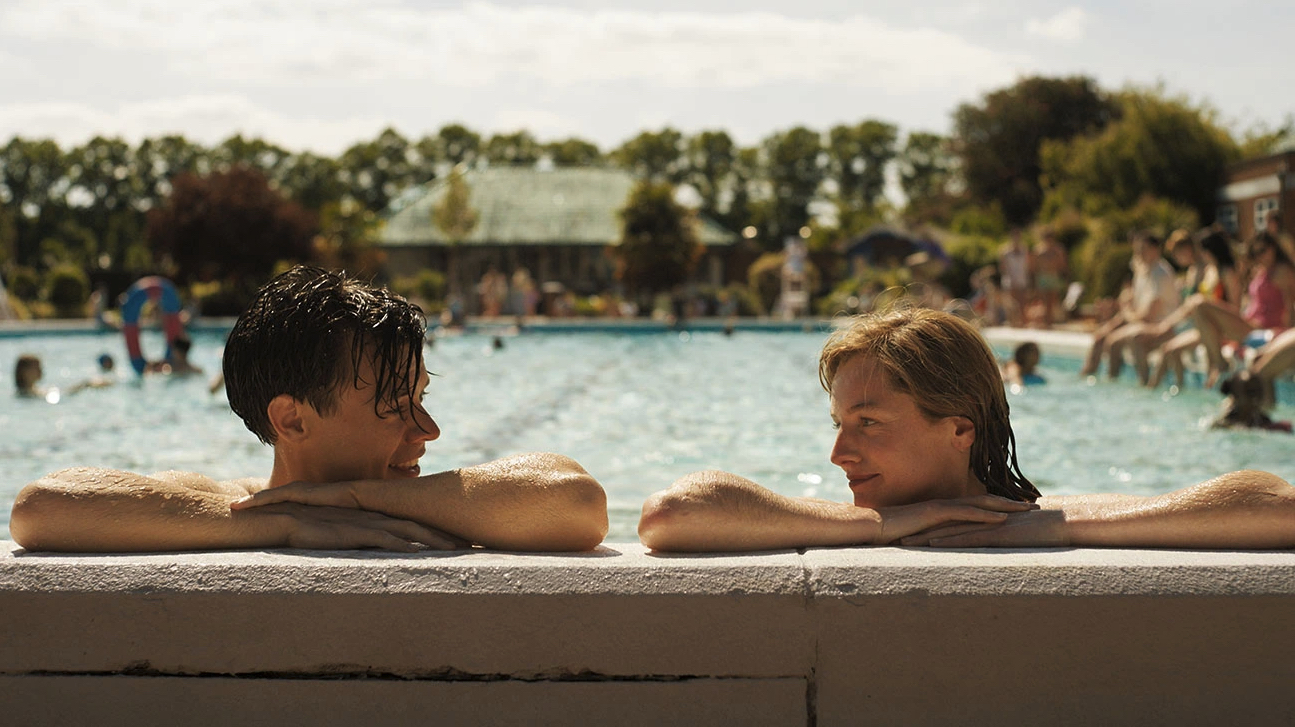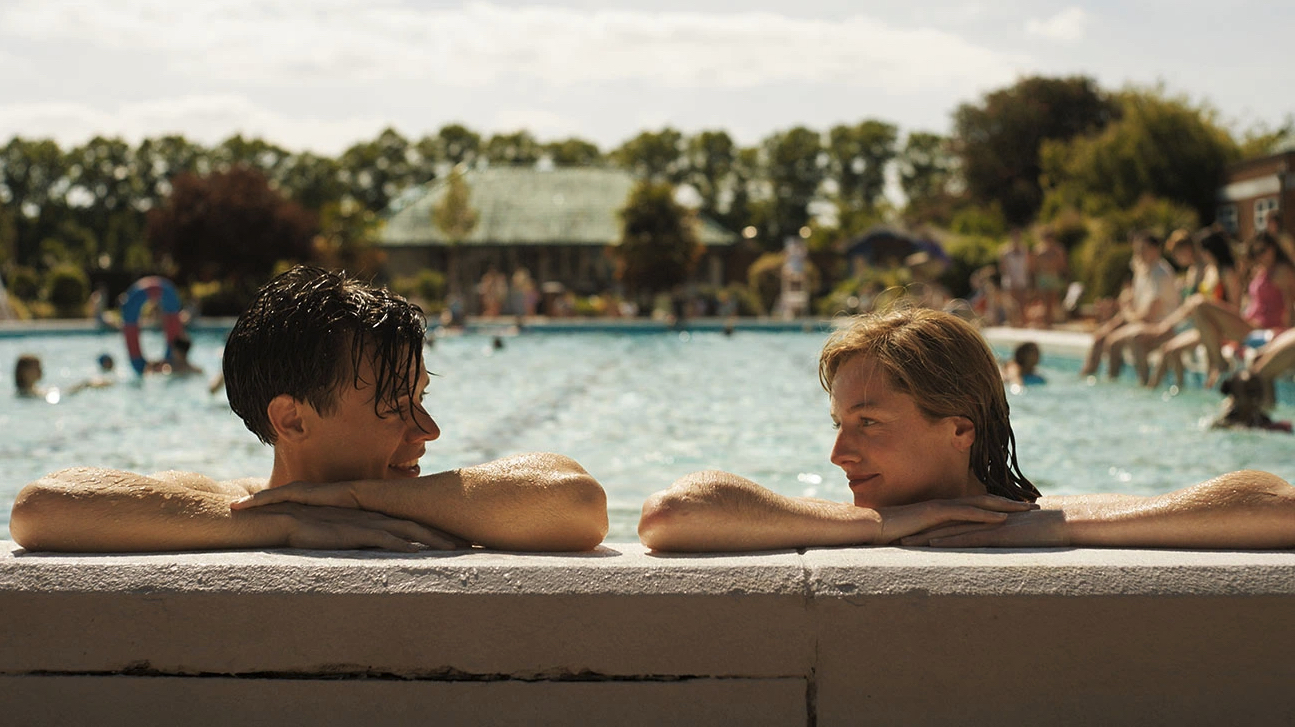
Years ago, I wrote reviews for the imaginatively titled Film Review. One of my fellow critics was another gay man, who automatically loathed all gay-themed films, sight unseen. His stance was simple and forcefully expressed: “It’s always awful.” And he would refuse to review anything remotely “queer”.
Today, he’d be left with nothing to write about: everybody wants a slice of the gay pie. You can’t get an invite to the rom com prom without a sexual quirk or kink. LGBTQ is now recognised as a mainstream genre, something that caused Netflix considerable online grief when they put their Jeffrey Dahmer drama into it.
Along with this ubiquity arrives the accusation of “queerbaiting”. This weird little expression means either luring in the gays with the promise of something gay, and then not delivering, or using a “queer aesthetic” without being “queer” enough, or — horrors! — even at all. Dr Justin Bengry, lecturer in “Queer History” at Goldsmiths, recently told Euronews in fluent boilerplate: “We, as queer people, are right to demand ever more representation and celebration of our existence and the incredible variety and diversity within our communities.” He went on: “When we critique someone’s behaviour as ‘queer baiting’… we are accusing that they are wilfully misusing their privilege and even deceiving us about their own understanding of themself to attract attention and even benefit socially and financially.”
A confession. I think Channel 4’s Cucumber was a masterpiece. I enjoy the books of John Rechy. I think Frasier writer Joe Keenan’s novel trilogy beginning with Blue Heaven is sublime. But I find most gay culture, and nearly all “queer” culture, excruciatingly bad and frequently embarrassing. I have a theory that more gay teen wretchedness is caused by “empowering” gay culture, supposedly uplifting but horribly depressing, than anything else. I bought a book called How To Be A Happy Homosexual when I was 16 and it drove me to the outer edge of despair. The mere thought of The Communards, even now, makes me look hungrily towards the medicine cabinet.
The current craze for “representation” is nothing more than hollow fetishism, with all the vacuous, rictus-grinning “celebration” of an office party. It has not widened or improved gay culture, but simply bloated it. In fact, I often prefer it when straight people do the job: Bowie and early Suede, Marty Feldman and Barry Took writing for “Julian and Sandy” on Round The Horne, Gary Oldman and Alfred Molina in Prick Up Your Ears. Mary Renault and Barbara Pym wrote great books about gay men.
It is very strange to think that only homosexual artists can produce art that includes homosexuality, that only gay actors can act gay parts. When it happens the other way round, nobody even notices. Legions of lesbians and gaggles of gays have written hetero stories. Noel Coward wrote plays where young male characters have non-gay secrets — heterosexual affairs — and they function perfectly. James Baldwin wrote about white heterosexual people in a world where his gayness and his race were considerably more of an issue than they would be today, and he did it brilliantly.
I’d suggest not that there is no difference, but that good writers and good actors can traverse these boundaries in their stride. It is a strange criterion to be asked to judge art on its author’s characteristics, particularly as it has followed on from the same strain of cracked academia that gifted us “the death of the author”. As for queerbaiting? I’d suggest that like most things, sometimes it’s bad, and sometimes it’s good, depending on whether the artist is an astute observer and a natural empath — by which I don’t mean the modern version of empath, the loopy “be kind” TikTokker with mad staring eyes. A smart outsider can see things insiders miss and make great art from it.
Surely the right question to ask remains not “is this authentic?”, but “is this any good?”. I don’t care if I’ve been “baited” if what I’ve been baited with was worth it. Harry Styles is, of course, the baiter supreme, being coy about his incredibly obvious heterosexuality and sporting accessories from someone’s nan who passed away in 1973. In My Policeman, out couple of weeks ago, he plays a gay character who marries a woman to conceal his secret. But his work is offensive not because of this but because it is so bad.
A little example of my own. I wrote a TV script about lads playing football and a heterosexual romance, and people were surprised. I found this very odd, as I had written about distant planets without having visited them and alien beings without having met any, and nobody had expressed the slightest surprise. It’s ironic that “queer” — something supposedly all about breaking categories, we are told — is so tight-arsed about people staying in their lane. But then, of course, queer isn’t actually about breaking down categories at all, but about inventing tons of new ones for status, goading people, and having big squabbles on the socials.
Gay men have certainly always been pretty good at self-baiting. Until fairly recently, gay magazine Attitude nearly always had a front cover of a semi-undraped young straight male starlet, often from Hollyoaks, with a teaser quote — something along the lines of “I’ve often wondered what it might be like to be taken suddenly from behind by a big old leather bear” — and a hint that this dreamboat might possibly flash their scrotum on page 53. This was supposed to act as gay catnip, and presumably did.
So what’s wrong with the gays acting as catnip for straights? Consider Heartstopper, a TV series about a gay male romance written by Alice Oseman, a woman who styles herself as “aromantic”, but who feels confident enough to churn out complicated tales of other people’s romantic lives. Good for her. It is notable that she is not lambasted for inauthenticity, but then she is fully signed up to the prevailing ideology, so she’s safe. But here is where fetishism comes in.
Writing about gays isn’t the same as seeking them as an audience. There is a small area of publishing — often self-publishing — full of erotic novels about gay men written by and, crucially, for straight women. (And of course a much larger, less delicately-presented, slab of it dedicated to straight men writing about lesbians.) This, and Heartstopper, is not a million miles away from Jackie magazine stories of yore. When something is an elevated masturbation fantasy, it is probably best to keep that in mind and not raise it above its lowly cultural rung. But where is the harm in it?
We often hear that the age of deference is gone. But this is not so. We just defer to different people. At the moment, for reasons unclear, we defer to American teenagers with peculiar ideas. When we emerge from this cultural tunnel we will hopefully be able to flit freely again around stories and people, whatever their sexual preferences. Yes, there might well be some terrible clangers and some unpleasant wanks out there. But these are the price we pay for approaching art with generous hearts and open minds.
Generous and open are two things that American teenagers trumpeting accusations of queerbaiting are not. And even the most progressive corners of the “LGBTQ” cultural establishment are starting to realise it. After Heartstopper star Kit Connor claimed, earlier this week, that queerbaiting allegations had “forced” him to come out as bisexual, even PinkNews took his side. This is a U-turn for a site that ran an explainer in 2018 about why queerbaiting was a “problem” — and hints that better days are to come. Days in which audience and cast alike don’t have to worry about who the other likes fucking.








